
Halloween and "el día de Todos los Santos". How are they linked?
Did you know that at Hispania, escuela de español, we love celebrating Halloween?
Our teachers usually dress up as vampires or the walking dead and teach halloween themed classes.
You'll die of laughter! 😁
In today’s article we are going to talk about Halloween night and 'día de Todos los Santos' (Saints Day) as well as how the two celebrations that take place on the 31st of October and the 1st of November are related and how they are different.
Get your best Halloween costume on because a terrifying night lies ahead of us!👻
What are the origins of Halloween and Todos los Santos
Usually we associate Halloween with the United States.
But actually the origen of Halloween dates back to ancient celtic traditions ..
They celebrated Halloween on the night of the 31st of October.
On that night the world of the living intermingled with that of the dead. Souls of all kinds, both good and evil, could roam the streets.
Spooky! Right? 😖
During this night, known as Halloween, Celts they left offerings at the gates from their homes for these souls and lit candles to guide them to their world.
They also wore costumes and masks to confuse the spirits or even frighten them.
Very similar to how we continue to celebrate it today, don't you think?
This celebration was passed onto England and Ireland and later reached the United States.
On the other hand, el día de Todos los Santos originated as a Christian celebration.
It is celebrated the day after Halloweenon the 1st of November.
Originally, the day was used to honour and worship all the Saints who didn't have a day specifically dedicated to them on the calendar.
Nowadays, people often take flowers to the cemetery where their family members lay to rest as gesture of respect and love for them.
How are Halloween and día de los Santos linked?
The word Halloween, “All Hallows Eve”, means "The eve of All Saints" in Spanish.
Halloween is the predecessor of el día de Todos los Muertos as it is celebrated one day prior. The two celebrations are both related to the idea of death. .
Both celebrations are of religious origin.
Whilst Halloween is a pagan celebration , el dia de Todos los Santos is a Christian celebration.
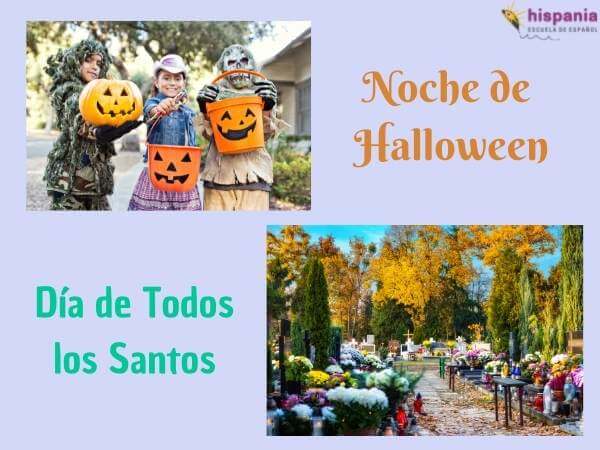
Differences between Halloween and día de Todos los Santos
In reality, the evening of Halloween is associated with dressing up and having a good time with friends.
Children also enjoy the celebration. They usually go to their next-door neighbours and ask for sweeties by saying the famous expression: “trick or treat” or "truco o trato" in Spanish.
If you are in Valencia, there are many ways of enjoying Halloween in Valencia, from celebrating at home with friends, to enjoying a horror show in a shopping mall.
Do you like dancing?
Well, get yourself to a club in Ruzafa or el Carmen.
There is nothing more fun than going to a good party dressed up as a skull! 💃🕺
On the other hand, el día de Todos los Santos is usually a bit more relaxed and family focused.
People go to the cemetery to visit family members who have passed away and leave flowersfor them. For many families it is a very emotional occasion.
This is what people usually do on el día de Todos los Santos in Valencia. .
Although, there is one thing for sure, nowadays many people don’t take the day quite so seriously and take the opportunity to go on a short-break, especially if the bank holiday coincides with a long weekend.
Halloween was never really celebrated in Spain until a few years ago thanks to the influence of the United States.
On the other hand, el Día de Todos los Santos is a bank holiday based on many years of Spanish tradition.
¡Ah! ¡se me olvidaba!
The Spanish eat traditional Spanish food, just like with any other celebration. 😋
Many families cook buñuelos de viento (a type of sugar-coated sweet treat), chestnuts or huesos de santo (a sweet, filled pastry).

How to carve a Halloween pumpkin
Whats the first thing that comes to mind when you think about Halloween?
Pumpkins with scary faces, right?
So, where does this tradition come from?
It was basically a way that the Celts used to dispel or banish bad spirits from their homes.
Although, the Celts actually used turnips.
It was the Irish that started using pumpkins once they emigrated to the United States as there was an abundance of pumpkins there.
Want to carve a Halloween pumpkin and put it in your doorway to scare of anyone who dares look at it? 🤗
It’s really easy to do. We’ll give you a series of instructions now:
- Cut the top of the Pumpkin, making a lid.
- Empty the Pumpkin using a knife and large spoon through the whole you just made.
- Draw a face of the pumpkin with a black pen. To make a scary face, the eyes are usually triangular and the mouth a zig zag. How scary! 😄
- Cut out the eyes and mouth with a knife or shaped cutter.
- Put a candle inside the pumpkin to give it a bit of life and a sinister look about it.
¡Listo! If you carve a pumpkin following these instructions, you’ll be sure to make all your neighbours jealous this Halloween.
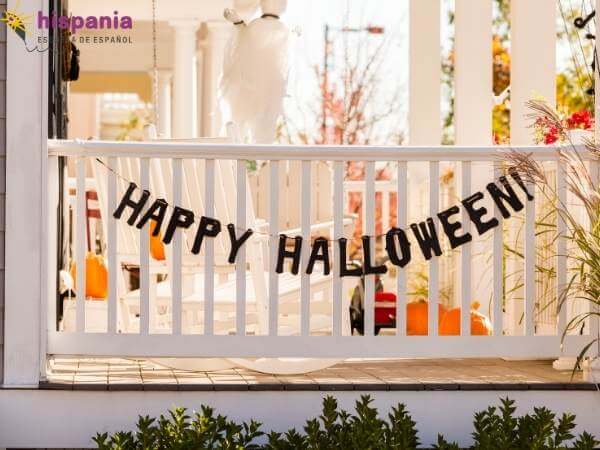
How to decorate the house for Halloween
Want to invite friends over on Halloween and give your house the perfect Halloween atmosphere?
Dim lighting is essential!
Turn off all the lights and place candles throughout the house to create a dark and unnerving atmosphere.
Want to tell a ghost story at the table?
Put a candle just under your face and watch as it casts long shadows across your face.
Your friends will be scared to look at you. 🤣
If you are a fan of arts and crafts , there are various projects you can do:
For example, you could create small characters really simply out of papier mache.
All you need to do is paint one green and stick on some plastic eyes and you’ll have yourself a little Frankenstein.
Cover another one in white bandages and you’ll have a mummy.
Give it a creative touch and make your favourite horror movie characters.
Another very original and fun decoration is to buy a bouquet of roses, paint them black and put an eyeball inside them… a plastic eyeball, not a real one of course! 🤣🤣
Surely, you’ll be able to find one at a costume shop.
In these types of shops you can find all sorts of accessories like cobwebs, plastic skeletons and plastic strips for sticking your decorations on the wall.
Let’s not forget about the most important bit… the costumes!
What are you dressing up as this year?
Dracula? Frankenstein Something classic that never goes out of fashion.
Or maybe something more modern? Money Heist (la casa de papel) or The Joker?
Surprise your friends with an original costume this year and... pásatelo en grande… or better yet ¡pásatelo de muerte! 😁
And don’t forget that many children enjoy Halloween. There are many costumes for children as well.
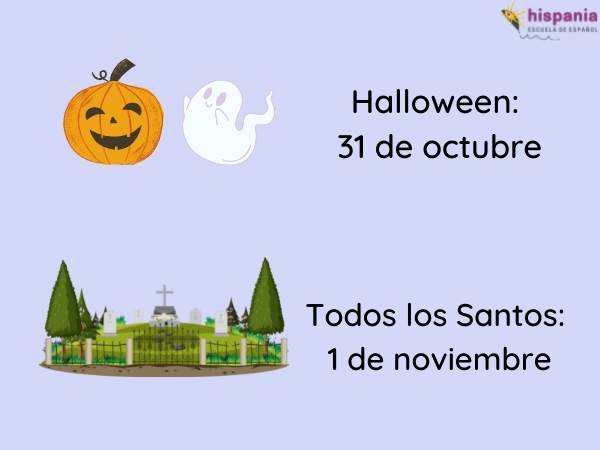
Why is el día de Todos los Santos celebrated on the 1st of November and Halloween on the 31st of October?
The Celts celebrated Halloween on the 31st of October for a clear reason:
The XNUMXst of October is the last night of summer , meaning that the temperatures start to drop in autumn and then winter.
Additionally, it marked the start of longer evening and less activity taking place on the streets.
Death is often associated with the dark, the cold and silence in many cultures which makes quite a lot of sense, don’t you think?
El día de Todos los Santos was originally celebrated on the 13th of May..
However, in the year 731 the Popes Gregorio III and Gregorio IV changed the date to the 1st of November so it would coincide with the Irish tradition.
As you can see, the celebration is truly ancient yet still celebrated today.
Don’t you think that’s amazing?
Todos los Santos takes place on the the evening of the 1st of November and marks the start of another very important day: Día de los Difuntos or el día de los Muertos (day of the dead).
Did you know that the día de los Difuntos is also very special in other countries?
For example, it’s very popular in Mexico where it is celebrated the 2nd of November. The day is for remembering and paying respect to our loved ones who have passed away.
The 2nd of November isn’t a bank holiday in Spain, instead we commemorate our deceased loved ones on Todos los Santos.
What does holywins mean and how is it celebrated?
Did you know there is a movement against the celebration of Halloween in some European countries?
That's right, it all started in France in 2002 and it’s called holywins. In Spain the same movement started in 2008.
This alternative to Halloween was born to counteract the popularity the celebration was gaining in Europe since the start of the XNUMXst century.
In Spanish, the word holywins means: “la Santidad vence”.
Catholics created Holywins because Halloween is a Pagan celebration which isn’t linked in any way to the Christian faith.
During Holywins , Catholics go to church to pray and young people are only able to dress up as Saints.
People also enjoy dinners, workshops and other activities.
Above all, Holywins seeks to reinforce the importance of the celebration Todos los Santos.
In this article we have told you a lot of information about Halloween and el día de Todos los Santos.
Surely you are a little clearer on how these days are celebrated in Spain and Europe.
¡Nos vemos en la fiesta!
Remember to come in your best costume. 😉
Article written by Carlos Martínez for Hispania, escuela de español
More articles

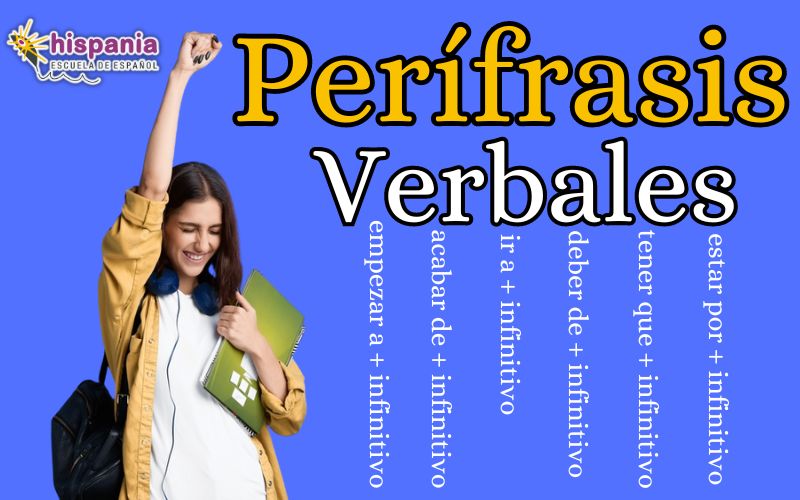
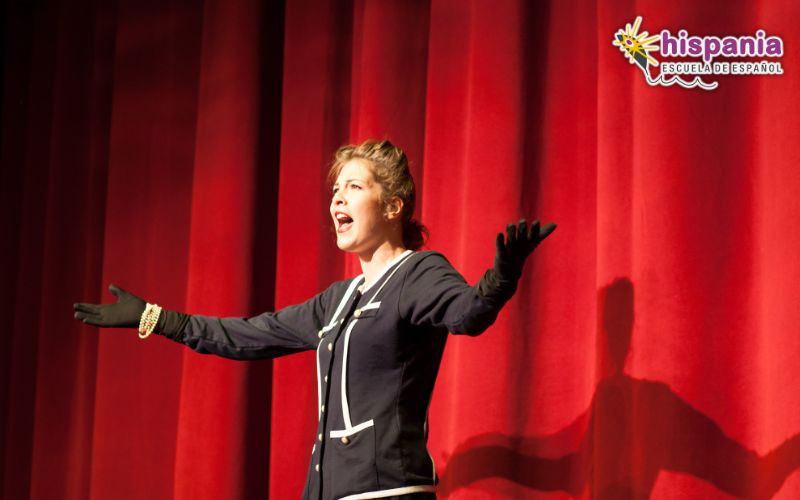

2 comments about “Halloween and el día de Todos los Santos. How are they linked?”
Hi carlos.
I differ in your affirmation that in Spain the Night of All Saints was not celebrated until two decades ago with the appearance of Halloween. During the dictatorship, pagan and costume parties (also carnivals) were prohibited, but in many of the small towns this prohibition was skipped. An example of this was my town in the heart of La Mancha. All Saints' Night was always celebrated on October 31, (also carnivals) dressed up, doing pranks to scare, telling scary stories, with candles inside pumpkins and melons at the door of the house and sweet porridge and the November 1 was also celebrated, and of course, All Saints' Day. And this was celebrated by my parents in the 40s -50s-60s, and I in the early 70s until my family migrated to Madrid in 1974. The celebration of All Saints' Night in Spain is not only American influence.
All the best
Palmira
Hi Palmyra.
At no point in the article do I say that All Saints' Night has been celebrated for two decades.
Of course, in Spain there have been traditions related to this for a long time, I agree with you.
Thank you very much for your comment.
A greeting!